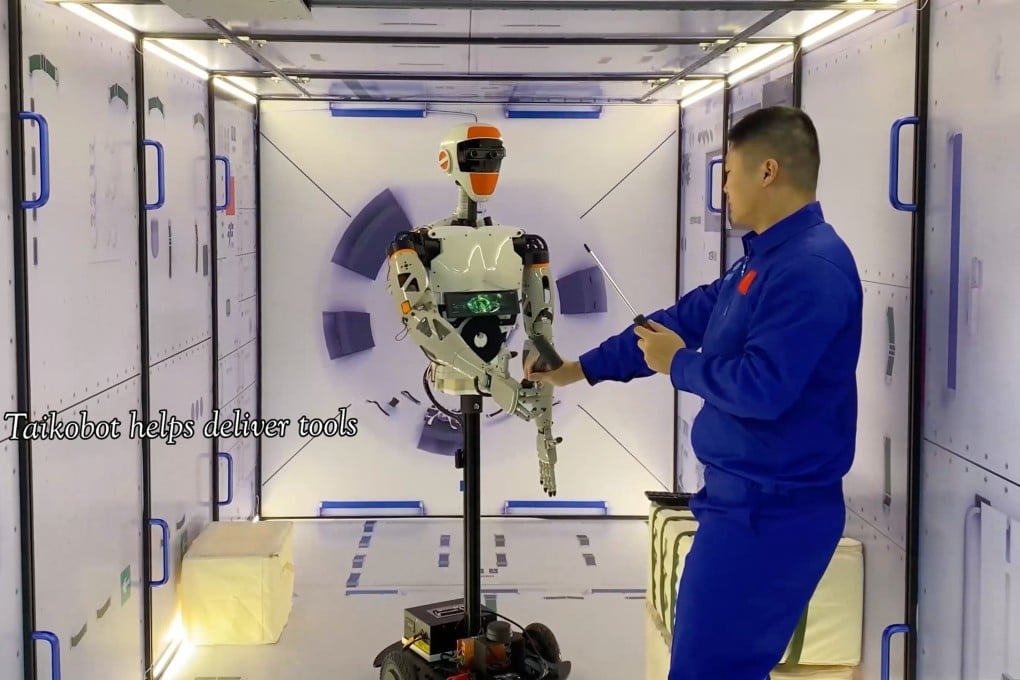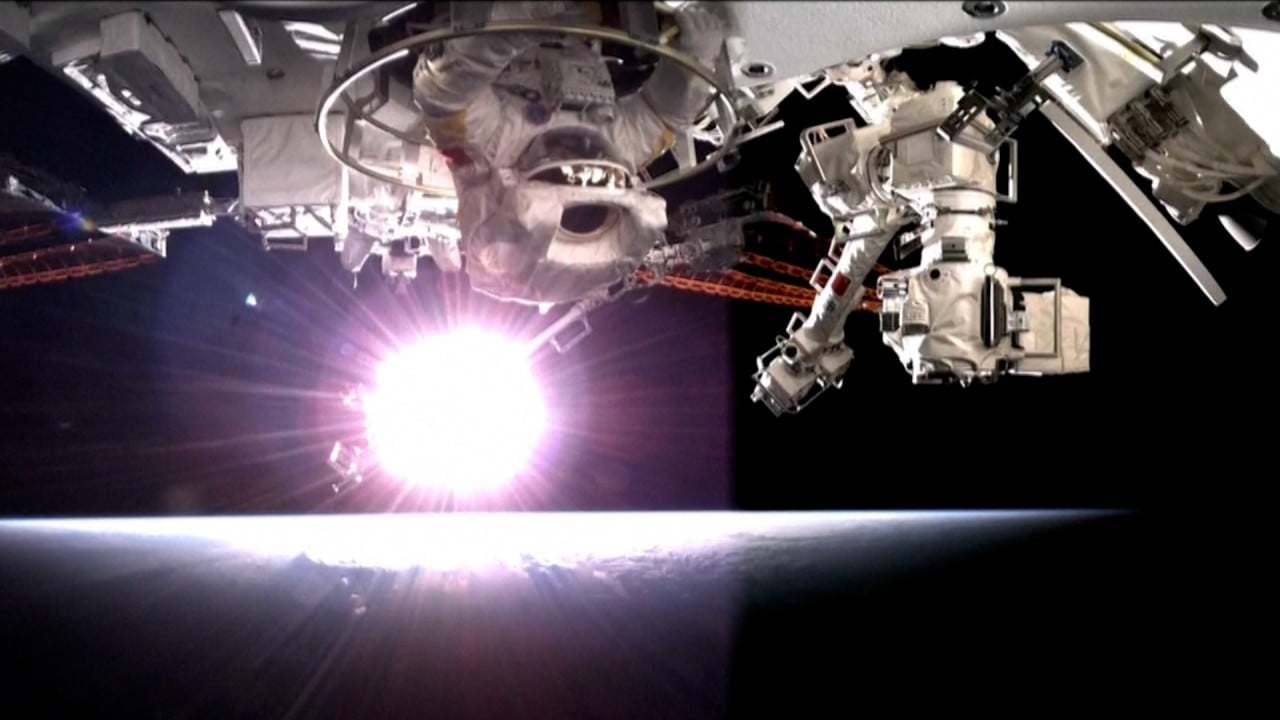Taikobot, China’s flying humanoid robot, is ready to ease the workload from astronauts in space station
- Chinese social media is captivated by space-age robot could help hold tools, deliver packages and other tasks to aid humans in space
- Taikobot has advanced sensors and cameras, allowing it to perform tasks autonomously, and can navigate the cabin with stability

Taikobot is as tall as an adult but weighs the same as a child and has advanced sensors and cameras, allowing it to perform tasks autonomously.
The work is led by Zhang Qi, a professor at the National University of Defence Technology, in cooperation with Zhejiang University professor Zhang Yulin. Zhang Yulin is also former deputy commander-in-chief of China’s manned space flight programme.

Photos of the bot have been trending on social media platforms such as Weibo and Twitter recently after the team’s paper was published in the international peer-reviewed journal Machines in October.
“Our Taikobot is capable of stable in-cabin navigation, robust astronaut detection and tracking, plus skilful object manipulation,” Zhang Qi said in the paper. “Taikobot has the ability to manipulate a set of tools and interfaces designed for human beings.”
Zhang Qi and his team carried out ground experiments inside a space station mock-up, where the robot could hold and manipulate a hammer and an electric screwdriver with one hand and transport a 2kg package with its dual-arm system under Earth’s gravity. When working with astronauts, Taikobot can help deliver tools and hold the tools returned.
Unlike ground-walking robots on Earth, Taikobot has a novel movement strategy that mimics how humans move in space. This whole-body joint control is named PFP and can be divided into three sub-processes: push-off, flight and parking.
